By Jack Igelman, originally published by Carolina Public Press. Carolina Public Press is an independent, in-depth and investigative nonprofit news service for North Carolina.
The U.S. Forest Service plans to harvest the majority of trees at 16 sites in Nantahala National Forest beginning next year as part of its Southside Project.
Conservation organizations argue the trees at several of these sites represent exceptionally older and rarer growth than the Forest Service has recognized and are calling for the project to be withdrawn or revised after the Forest Service completes the revision of its land management plan for the Pisgah and Nantahala national forests in Western North Carolina, a draft of which is expected later this year.
“Only one-half of 1 percent of the forest is old growth in the Southeast,” Buzz Williams of the Chattooga Conservancy told Carolina Public Press. “That is the reason within itself to leave it alone.”
Seeing the trees within the forest
Williams recently visited a 23-acre site on a ridge below Round Mountain, near the headwaters of the Whitewater River in Jackson County. He removed a sample of wood with the diameter of a chopstick from the core of a towering chestnut oak growing on the ridge.
By viewing the rings that are visible in the sample, Williams estimated that the tree is nearly two centuries old. And it’s not alone: Scattered on the ridgeline are aging white oaks and other tree species that eluded the heavy logging of the region a century ago.
The stand of forest near the North Carolina-South Carolina state line is a perfect example, he said, of an old-growth forest ecosystem.
“There is no evidence of logging here,” Williams said. “There are no stumps.”
He reckoned that the less valuable chestnut oaks on the ridgeline or perhaps the steep grade may explain why loggers a century ago ignored it.
Most people would concede that the trees on Round Mountain are old, but the agreement may end there.
Williams and other conservationists argue that this stand of older trees and others like it are exceptional and should be conserved. The Forest Service currently says they are not sufficiently exceptional to be conserved.
The Southside Project to harvest these sites was announced in 2017. Following the release of an environmental impact statement and public comment period, Michael Wilkins, the Nantahala National Forest district ranger, released a final decision in February that approved it.
Williams’ organization opposes the project because of its impact on old-growth forest ecosystems, water quality and the biodiversity of the region.
Since the project’s announcement, the Chattooga Conservancy, which is based in Georgia, mentored several undergraduate interns from the University of North Carolina to study sites within the project area.
Among the 16 stands identified in the project for timber restoration activities, the organization has studied seven of them and, according to Williams, has “found old growth in each.” The organization plans to study each of the stands in the Southside Project area.
So a question hangs over not just the Southside Project, but other current and future projects of the U.S. Forest Service in Western North Carolina as well: Which trees and forest stands are worthy of protection and which are not?
Forest policy disagreements
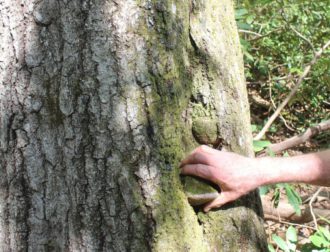
Disagreements and uncertainty about the ecological structure of the forest are not likely to fade in the future and may shape the future of Forest Service restoration projects that forest stakeholders and scientists say are critical to restoring the ecology of the aging forest.
The Southside Project and other projects in the planning and commenting stage highlight a central challenge facing the Forest Service and its management of the region’s million-plus acres of national forest.
Recently, the Forest Service closed the comment period for another cutting plan, the Buck Creek Project in Clay County. Conservation groups said that project would include harvesting timber in six old-growth areas.
Among the forest’s stakeholders, most agree that the forest has aged since the widespread logging in the early decades of the 20th century and requires intervention to create younger stands that are underrepresented in the forest.
However, not everyone agrees on where to do it.
“The forests are all recovering from being cut and from the chestnut blight in the early 1900s,” said Beverly Collins, a Western Carolina University ecologist who studies old-growth forests. “They are aging, and there isn’t as much young forest around that certain species depend on.”
On the other hand, she said, if a forest has unique species or a high level of biodiversity, it may be worthy of protection.
“It’s a good debate to have,” Collins said. “It really comes down to the argument of just how important it is to leave an area alone.”
To complicate the matter, Collins said that ecologists struggle with the definition of “old growth.”
“It can mean different things in different places,” she said.
For example, size isn’t necessarily an indicator of an old-growth tree. “Some trees grow very slowly, such as the tops of mountains or specific species, such as oaks,” she said.
Ecologists do agree on a handful of characteristics. An old-growth ecosystem includes trees that are older than about 50 percent of their natural life span and forests that have been undisturbed by humans.
Trouble with the trees
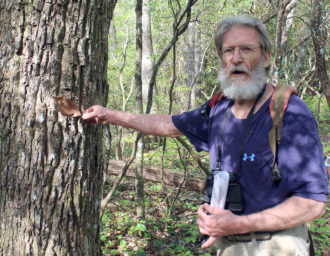
The Southside Project is designed to provide more early successional habitat — that is, managing the forest to include more grassy openings, shrubs and stands of trees less than 20 years old — through prescribed burning, timber thinning and other methods to improve species diversity and improve wildlife habitat.
In all, the Forest Service will harvest timber on more than 300 acres within a 19,000-acre region of the forest near the Georgia and South Carolina state lines in the Whitewater River and Chattooga River watersheds.
While the Chattooga Conservancy is not opposed to timber harvesting in the forest, this isn’t the spot to do it, said Executive Director Nicole Hayler.
“We are not a zero-cut organization,” she said. “I think we are reasonable. You have this really rare resource with all of these conservation and recreational values. We don’t need to liquidate it.”
The Forest Service disagreed. In an official response to the objections, the Forest Service wrote that while the Forest Service “should provide and restore old growth on the landscape,” this spot and others within the project are either not old growth or unique enough to protect.
The Forest Service, in its project decision, said this stand is indeed old, but this one and others like it throughout the forest and within the 18,944-acre project analysis are not uncommon. In addition, the stands in questions have been sufficiently impacted and were “selectively harvested at some time in the past.”
Steverson Moffat, the National Environmental Policy Act planning team leader of the Nantahala National Forest, told CPP that the current Pisgah-Nantahala national forest land and resource management plan requires that the forest designate large, medium and small patches of old growth to form a network that represents landscapes found in the Southern Appalachians that are well dispersed and interconnected.
The current plan established standards for the percentage, location and distribution of old-growth patches.
In all, the Forest Service said 33 percent of the land in the Southside Project area has forest stands over 100 years old. Additionally, 37 percent of the area is “designated old-growth patches” that cannot be harvested.
On a 26-acre stand near Brushy Mountain slated for harvest, the Forest Service said the site meets the minimal operational definition for old growth defined in a Forest Service document known as the Region 8 Old Growth Guide. Even so, the stand won’t be protected since it “is already well-represented and protected in existing old-growth designations.”
Formal objection
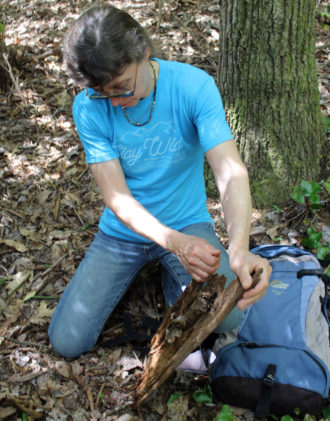
In August 2018, the Southern Environmental Law Center filed an administrative objection to the Southside Project on behalf of several organizations.
“The Southern Appalachians faced such intensive logging, that within the rare old growth we have, there is often some indication of minor disturbance in the past,” said SELC senior attorney Amelia Burnette. “If you disqualified all of that for old growth, what would be left?”
Burnette said the Forest Service did not address what old-growth forest benefits and values from the Brushy Mountain plot are being lost by replacing it with early successional habitat. “They say that we have enough of these patch designations, so we don’t have to look at the site-specific consequences of taking away this old-growth forest right here,” she said. “There is not a shortage of places to restore that don’t meet old-growth standards. There is not a need to create (early successional habitat) right on top of old growth.”
Moffat said the Forest Service strives to balance the needs of the ecosystem with the desires of the public. He points out that 317 acres out of 18,944 comprise just 1.7% of the project area’s landscape.
“We are struggling through these issues too and we want to do the best thing for these forests,” he said. “Within this part of the forest, the agency believes that carefully considering and implementing timber harvest to produce ESH for wildlife and diversity meets the needs of the present while protecting the majority of this area for current and future generations.”
In the Forest Service’s written response to comments from Hayler, it raised concerns about the analysis supervised by the Chattooga Conservancy. For example, the Forest Service said the analysis plots were located to depict “select areas” rather than a complete assessment of the area.
“The students went out to do an objective scientific study,” Hayler said. “They chose plots in an unbiased way to get a representative selection of vegetation within the landscape. The Forest Service sets the bar high for old growth, but you won’t find virgin forest in the East.
“While there is evidence of disturbance in these sites, given the size of the trees and other characteristics, we believe these are sections of old growth.”
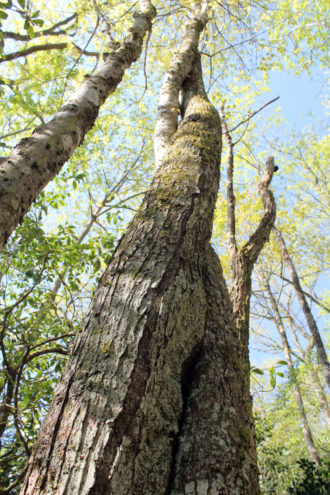
The Chattooga Conservancy and the SELC have also raised other objections to the Southside Project, including the impact on the habitat of the imperiled green salamander; that the fire regime will drastically exceed the natural fire cycle; that herbicide treatments will kill native forest species; and that the project will result in a net loss of taxpayers money.
In addition, said Williams, “Old-growth forests, when connected across the landscape, could provide our best chance to adapt and mitigate the effects of climate change.”
Collins of WCU said that whether a particular stand of forest is special to science is a difficult question to answer.
“We can’t predict what will happen with our forest, but maintaining as much biodiversity that we can will make our ecological systems more resilient,” she said. “We want to keep around patches of high diversity.”
However, she said she’s not opposed to timber harvesting in the national forests. “In fact, in many cases, disturbance helps ramp up diversity,” Collins said. “That’s what this comes down to. There are different perspectives on what the forest should be and the goals for a particular patch of land,” she said.
Burnette said the future forest plan has the opportunity to provide a better framework for handling small patches of old-growth forest in the future.
“The question of protecting old-growth forests is very much a planning-based question — in terms of the big picture of the management of the National Forest and restoring its ecological integrity,” Burnette said.
“In light of broad-based community support for protecting old growth, it’s perplexing that the (Forest Service) would want to rush out ahead of the process during a time when the question of protecting old-growth forests in the future is being considered in the revision of the forest plan.”



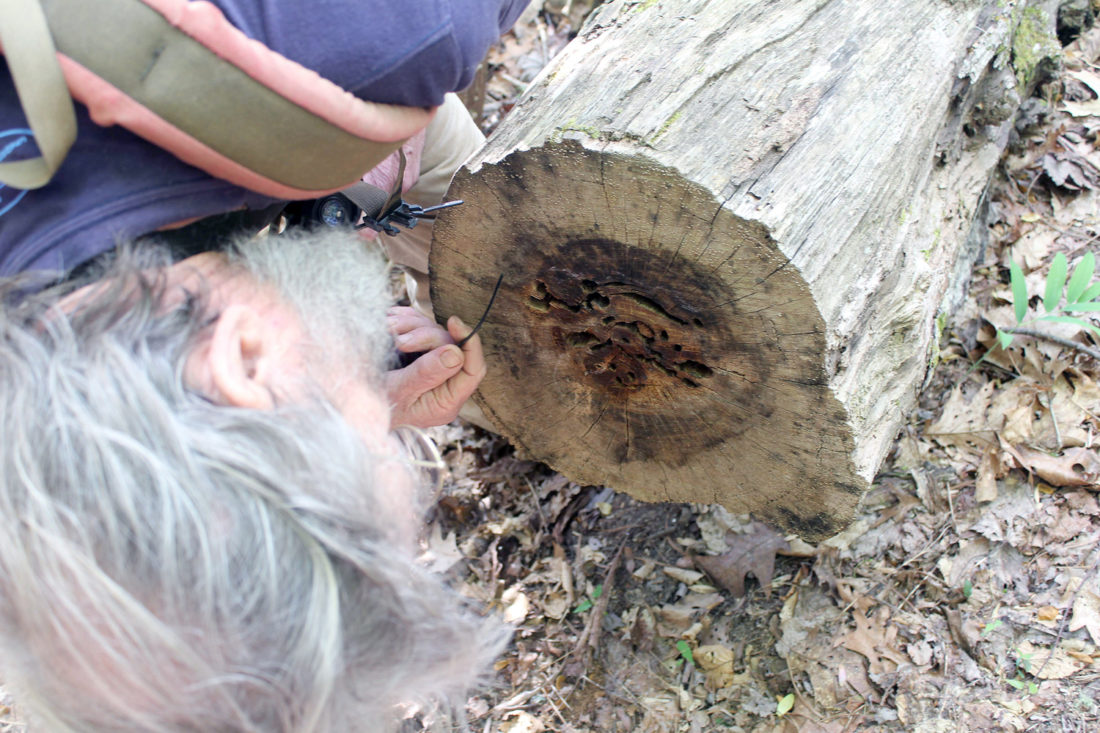
Before you comment
The comments section is here to provide a platform for civil dialogue on the issues we face together as a local community. Xpress is committed to offering this platform for all voices, but when the tone of the discussion gets nasty or strays off topic, we believe many people choose not to participate. Xpress editors are determined to moderate comments to ensure a constructive interchange is maintained. All comments judged not to be in keeping with the spirit of civil discourse will be removed and repeat violators will be banned. See here for our terms of service. Thank you for being part of this effort to promote respectful discussion.